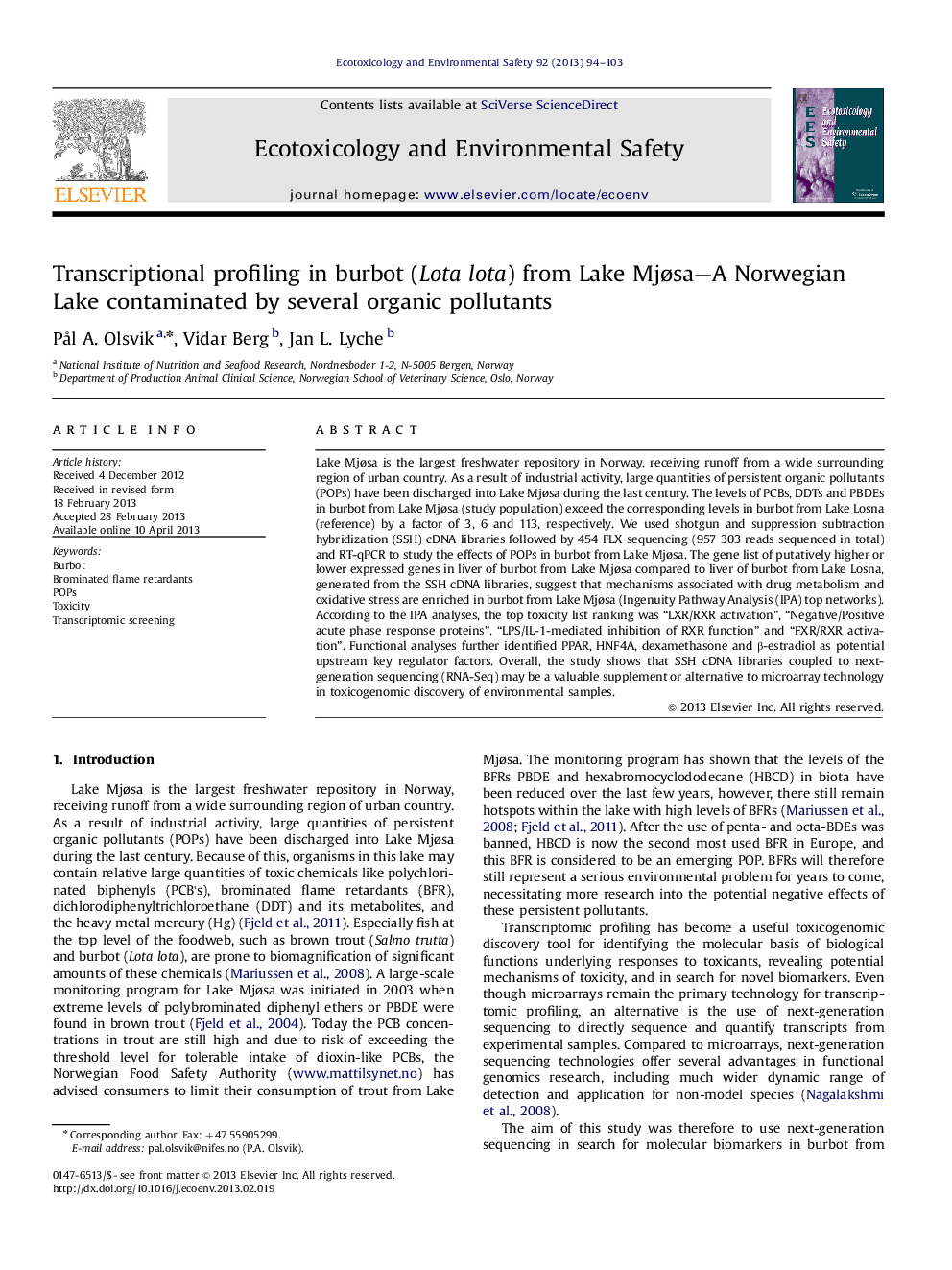| Article ID | Journal | Published Year | Pages | File Type |
|---|---|---|---|---|
| 4420438 | Ecotoxicology and Environmental Safety | 2013 | 10 Pages |
•Wild burbot from Lake Mjøsa contain POPs, especially brominated flame retardants.•Next-generation sequencing was used for toxicogenomic screening.•Drug metabolism and oxidative stress mechanisms enriched in contaminated burbot.•HNF4A, PPAR, dexamethasone and β-estradiol key regulators of networks enriched in males from Mjøsa.
Lake Mjøsa is the largest freshwater repository in Norway, receiving runoff from a wide surrounding region of urban country. As a result of industrial activity, large quantities of persistent organic pollutants (POPs) have been discharged into Lake Mjøsa during the last century. The levels of PCBs, DDTs and PBDEs in burbot from Lake Mjøsa (study population) exceed the corresponding levels in burbot from Lake Losna (reference) by a factor of 3, 6 and 113, respectively. We used shotgun and suppression subtraction hybridization (SSH) cDNA libraries followed by 454 FLX sequencing (957 303 reads sequenced in total) and RT-qPCR to study the effects of POPs in burbot from Lake Mjøsa. The gene list of putatively higher or lower expressed genes in liver of burbot from Lake Mjøsa compared to liver of burbot from Lake Losna, generated from the SSH cDNA libraries, suggest that mechanisms associated with drug metabolism and oxidative stress are enriched in burbot from Lake Mjøsa (Ingenuity Pathway Analysis (IPA) top networks). According to the IPA analyses, the top toxicity list ranking was “LXR/RXR activation”, “Negative/Positive acute phase response proteins”, “LPS/IL-1-mediated inhibition of RXR function” and “FXR/RXR activation”. Functional analyses further identified PPAR, HNF4A, dexamethasone and β-estradiol as potential upstream key regulator factors. Overall, the study shows that SSH cDNA libraries coupled to next-generation sequencing (RNA-Seq) may be a valuable supplement or alternative to microarray technology in toxicogenomic discovery of environmental samples.
